Mushroom identifier
Welcome to the mushroom identification helper, a tool designed to assist you in identifying mushrooms. Keep in mind that our database includes only a small subset of local mushrooms. While it may not cover the mushroom you are looking for, it can still help identify the mushroom genus.
Before using this tool, we highly recommend making a spore print of the mushroom you wish to identify, as the tool relies on knowing the spore print colour. For additional information and guidance, you can read the beginner's guide to mushroom identification basics.
Also, consider that identifying mushrooms is non-trivial, and there's a significant chance, especially for beginners, that you might get the ID wrong. Never consume a mushroom based on the result obtained by using this tool.
Begin the identification process by selecting one of the main sections below:
A significant characteristic for the agarics in the following groups or genuses is that they have white spore prints.
Amanita
The mushrooms in this group typically have white gills, a sac-like structure (volva) or a bulb at the base of the stem, and often a rim at the base of the stem. The majority of them also have a ring on the stem.
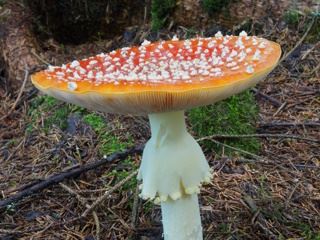
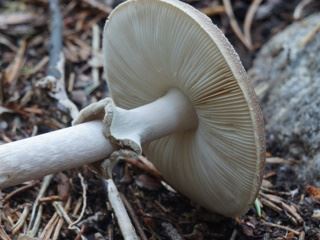
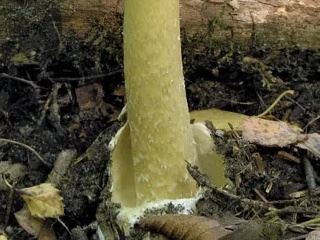
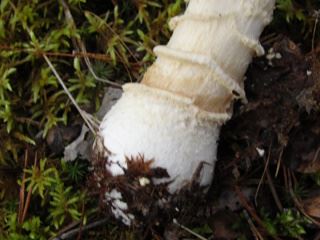
Armillaria
The mushrooms in this group typically grow on trees and woody debris, often appearing in clusters around the base.
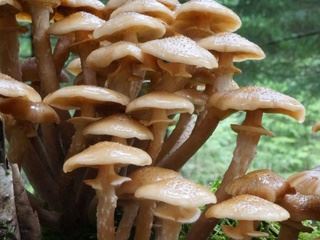
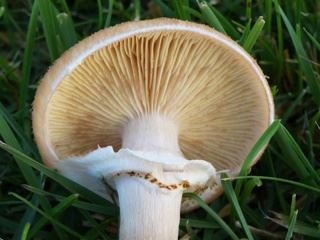
Cantharellus and Craterellus
These mushrooms have blunt, forked ridges instead of true gills. The ridges run down the stem and can’t be easily separated from the cap. Caps are often funnel-shaped and range in colour from golden yellow (Cantharellus) to grey or black (Craterellus).
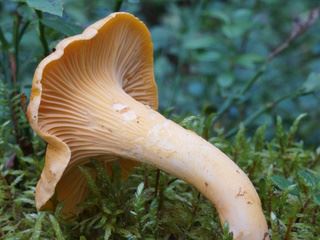
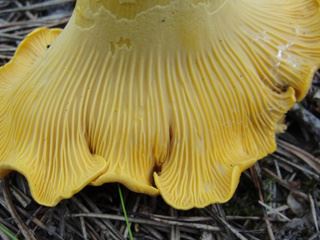
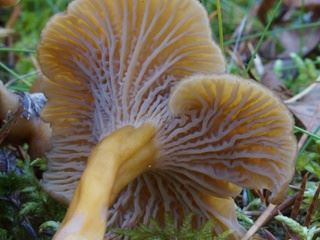
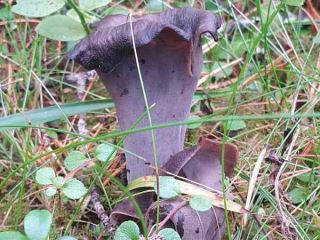
Clitocybe-like fungi
The gills run down the stem (decurrent) in most of the species and the cap is usually convex or funnel-shaped.
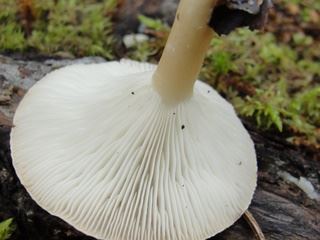
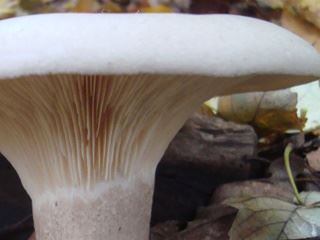
Hygrocybe and Hygrophorus
Mushrooms in this group are known as "woodwaxes" in the UK or "waxy caps" in North America. The caps of most species are smooth and become viscid to glutinous when damp, though not all exhibit this trait. The lamellae beneath the cap are typically distant, thick, waxy, and broadly attached or decurrent.
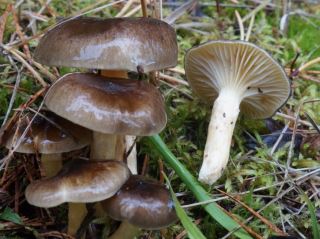
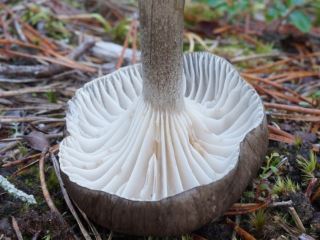
Lepiota and Macrolepiota
Usually have rings on the stem and scales on the cap. Some are very large, some small.
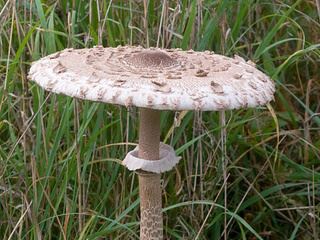
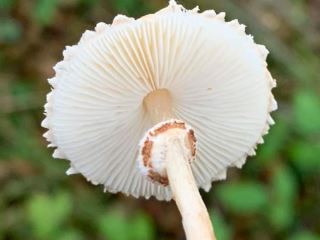
Laccaria
The main species in this group are very common. The stem is fibrous and gills are usually attached to the stem and are often in shades of purple.
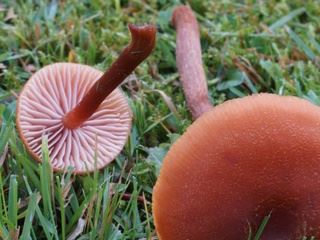
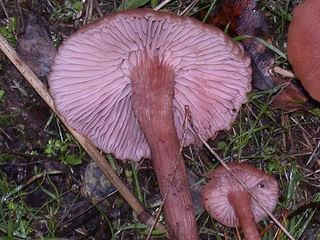
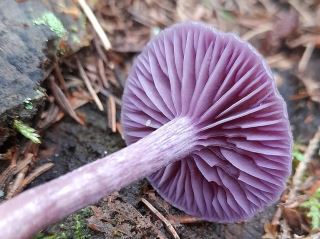
Lactarius
The species in this group exude droplets of milky-white, coloured or transparent liquid when damaged. The stem is usually brittle and does not have a ring or partial veil.

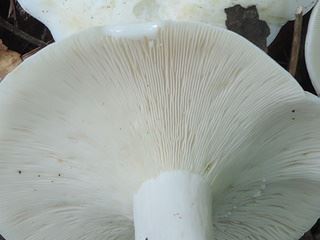
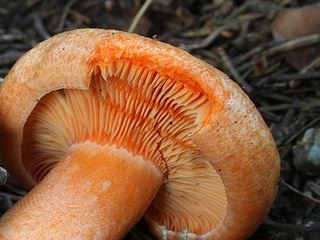
Marasmius
The species in this group are mostly small and white with tough flesh. The stem is typically long, thin, and tough, with a smooth or slightly fibrous texture. It is usually equal in width throughout and does not have a ring or partial veil.
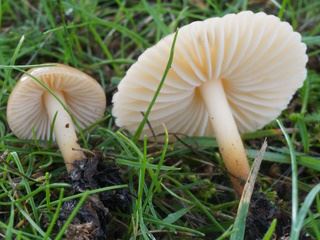
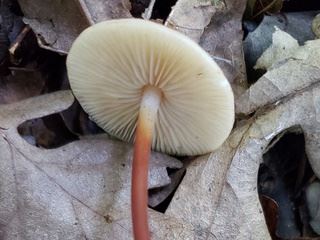
Melanoleuca
Mushrooms in the Melanoleuca genus are medium to large-sized fungi commonly found in grasslands, meadows, and wooded areas. They have white spore prints, smooth caps that often are flat with a central umbo, appearing in shades of white, beige, or brown, and fibrous stems that lack both a ring and a volva.
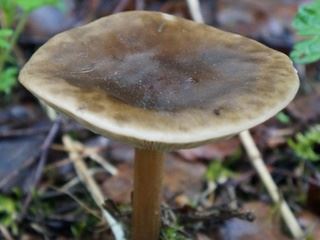
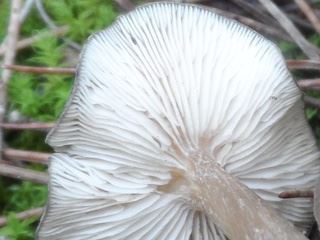
Mycena
Very small species with thin stems and mainly conical caps. Some exude a liquid on breaking the stem.
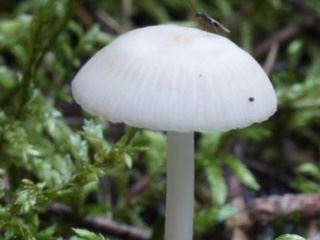
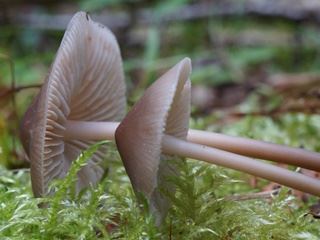
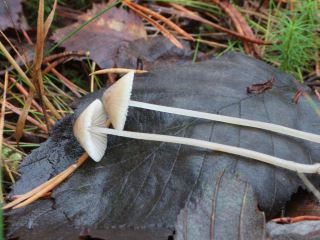
Pleurotus
Mushrooms in the Pleurotus genus, often called "oyster mushrooms," are characterized by their broad, fan-shaped or oyster-shaped caps. They grow on wood or debris. The stem is either lateral or almost absent.
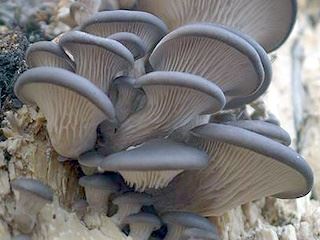
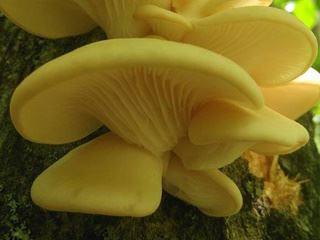
Russula
Very common in woods, often with bright colours. The gills and flesh are brittle, the gills white or creamy and the stem does not have a ring or partial veil.
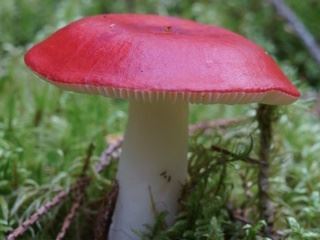
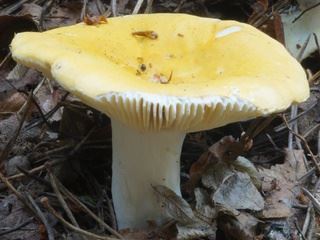
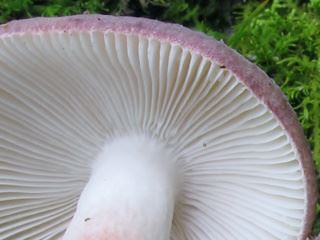
Tricholoma and Tricholomopsis
The species in this group are generally brown, grey, white or yellow and thick-fleshed with a stout appearance.
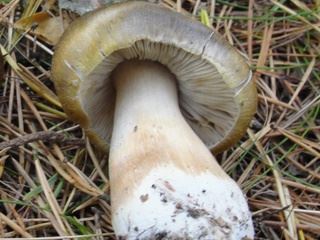
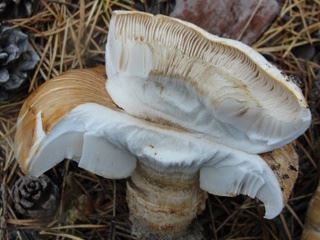
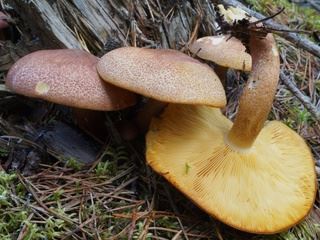
A significant characteristic for the agarics in the following groups is that they have a greenish spore print.
Green spored Chlorophyllum
The species in this group have greenish spores, causing them to often have greenish gills.
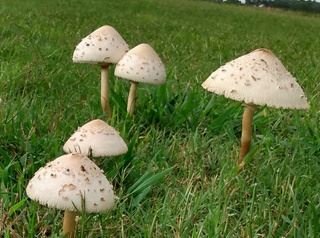
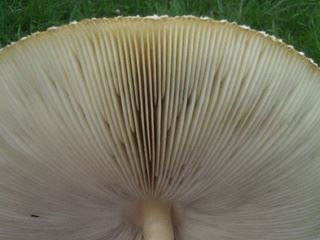
A significant characteristic for the agarics in the following groups or genuses is that they have either pink, brown or black spore prints.
Agaricus
The mushrooms in this genus have a cap and stem, with gills on the underside of the cap that are initially pink and then turn dark brown as the mushroom matures. The flesh of the mushroom is typically white and firm. Some have brown caps, some white.
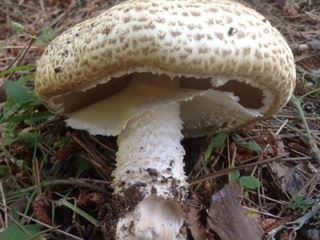
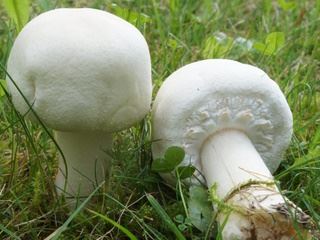
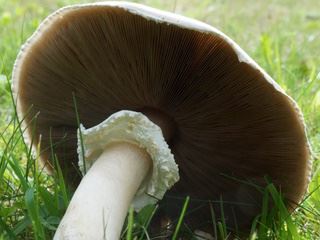
Agrocybe
Agrocybe mushrooms are typically small to medium-sized, with brown spore prints and dry caps. Their caps can be convex, bell-shaped, or nearly flat, and their colours range from yellow-brown to tan. They grow on grass, wood chips, dung, garden mulch, or in woods.
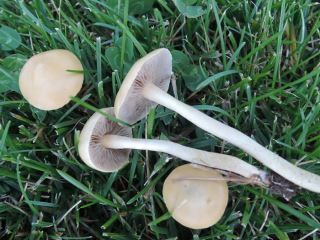
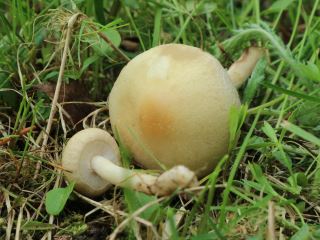
Coprinus, Coprinopsis and Coprinellus
The mushrooms in this group are Inc Caps. The gills very quickly turn to a black liquid in most of the members of these genuses.
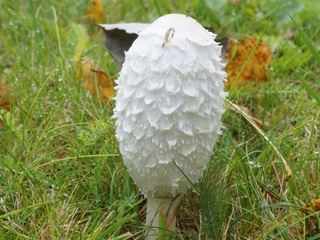
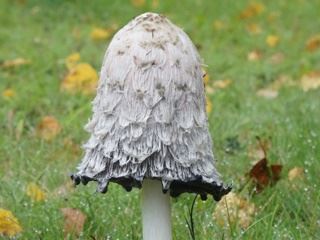
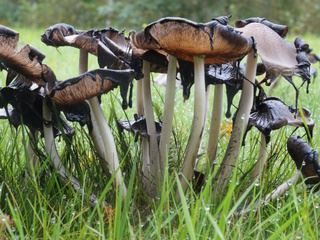
Cortinarius
A very large and varied genus. Most have a distinct cobweb-like partial veil called a cortina that covers the gills when the mushroom is young, but often disappears as the mushroom matures. All Cortinarius mushrooms have spores that are rusty brown, and their caps can range in colour from brown and red to purple and yellow.
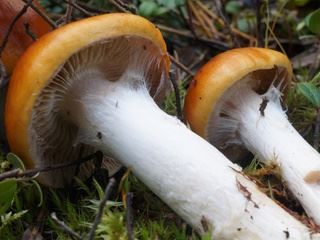
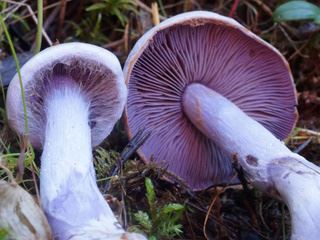
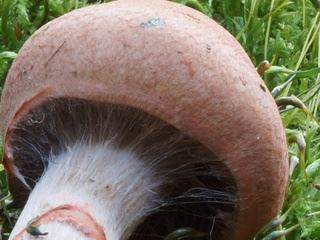
Entolomatoid Mushrooms
The gills of the species in this genus are usually attached to the stem and eventually turn pink as the pink spores mature. Most of them grow in grass. The spore prints of these mushrooms typically have a hint of pink or red.
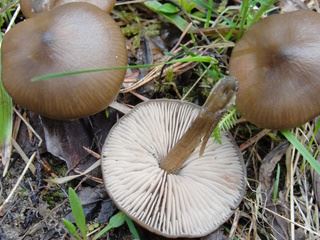
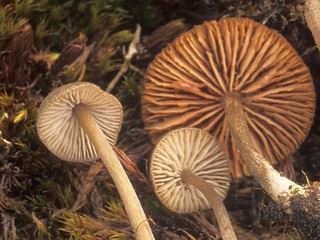
Galerina
The mushrooms in the Galerina genus typically have a conical to bell-shaped cap, a slender stalk and gills that are attached to the stem. The caps can range from light to dark brown and may be smooth, striated, or scaly. They obtain nutrients from decomposing organic matter, meaning they often grow on tree stumps.
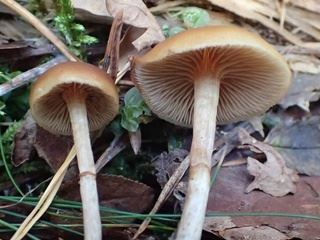
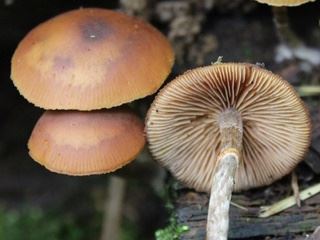
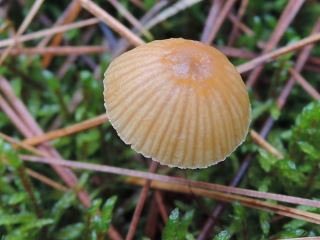
Gomphidius and Chroogomphus
Mushrooms in the Chroogomphus and Gomphidius group are medium-sized to large agarics with sticky or slimy caps, often coloured brown, grey, or tinged with orange or pink. The gills are thick, widely spaced, and strongly decurrent, becoming dark with age as the blackish spore powder develops. Stems are fairly stout and lack a ring.


Hypholoma
Mushrooms in the Hypholoma genus typically have small to medium-sized agaric bodies with features like a reddish-brown cap, crowded gills, and a stem that may be curved. They often grow in clusters, lack a ring, and can be found on stumps or debris of broad-leaf or conifer trees.
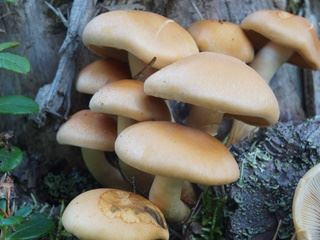
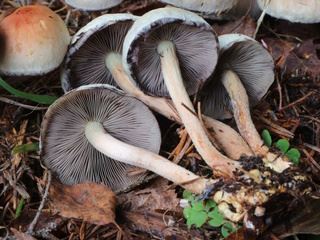
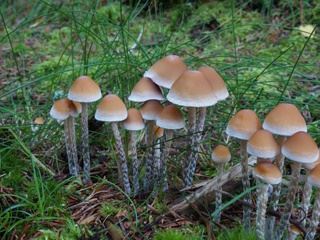
Kuehneromyces
Mushrooms in the Kuehneromyces genus are characterized by their small to medium-sized fruiting bodies, typically with convex to bell-shaped caps and a central stem. They often have brown or tan colours and gills beneath the cap. They obtain nutrients from decomposing organic matter, meaning they often grow on tree stumps.
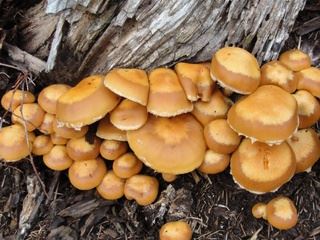
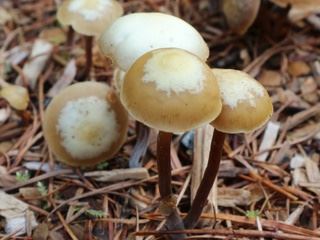
Pholiota
Mushrooms in the Pholiota genus typically grow in large clumps on wood, and are characterized by their dry caps that are often covered in scales or fibers. Some species have caps that are sticky to the touch, while others have caps that are very scaly.
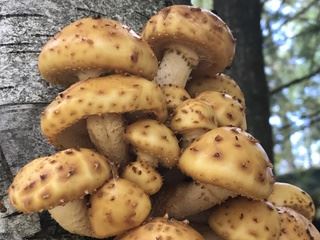
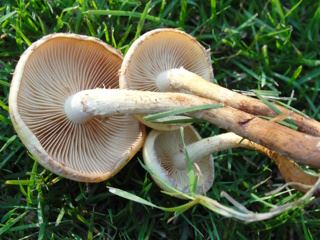
Psathyrella
Mushrooms in the Psathyrella group are typically small to medium-sized fungi characterized by their fragile, thin caps and slender stems. They often have gills that can be grey, or brown and may be attached to the stem or slightly free. Most have conical caps. They often grow in clumps.
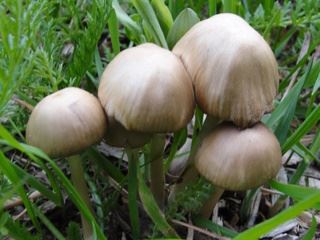
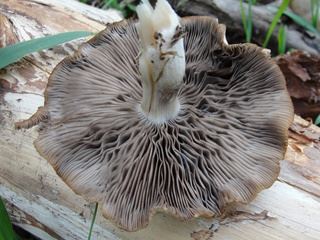
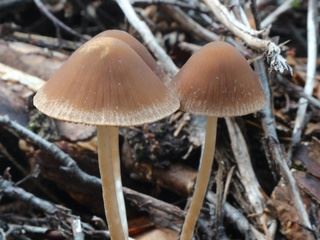
Stropharia
Mushrooms in the Stropharia genus are medium to large saprophytic fungi, characterized by their often colourful, sticky caps, and gills that turn dark as they mature due to spore production. Many species in this genus have a distinctive annulus (ring) on their stems.
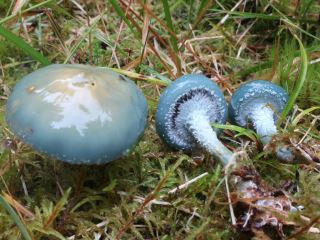
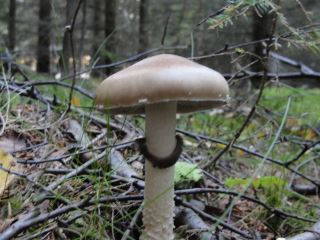
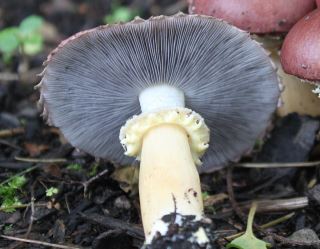
Tapinella
Mushrooms in the Tapinella genus are characterized by their reddish-brown to dark brown velvety caps, decurrent gills, and a preference for growing on dead or decaying trees.
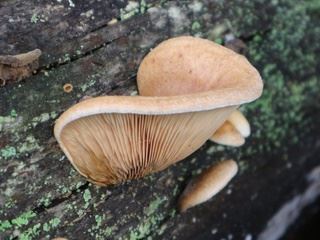
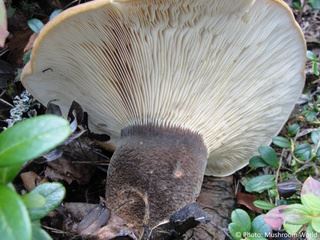
Instead of gills, the mushrooms in this category exhibit diverse features on the underside of their caps, such as pores, ridges, or a spongy surface.
Boletes
Boletes are a type of mushroom characterized by a fleshy, typically convex cap and almost always a porous or spongy underside instead of gills, although there are some boletes with gills. They are often found in forested areas and can range in colour from brown to red to blue.
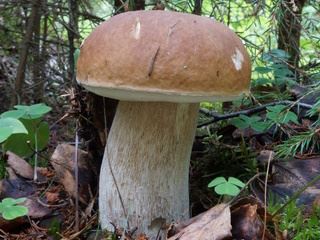
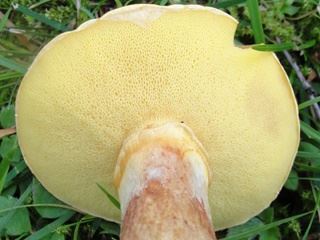
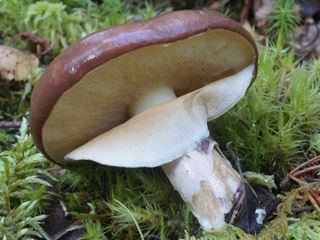
Morchella
Mushrooms in the Morchella genus, also known as morels, are characterized by their distinctive honeycomb-like cap and hollow stem.
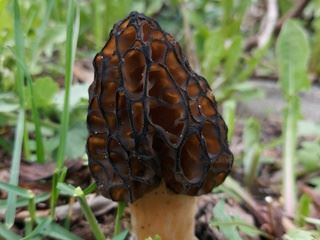
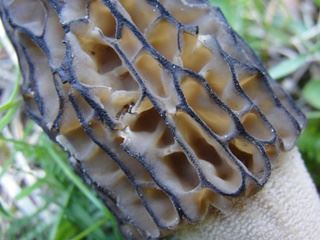
Gyromitra
Mushrooms in the Gyromitra genus, also known as false morels, are characterized by their irregularly shaped and brain-like caps. They are found in a variety of habitats, including forests, and can range in colour from tan to reddish-brown.
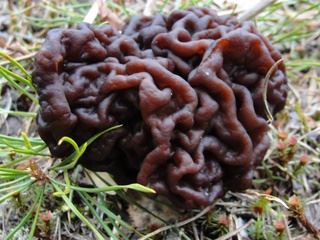
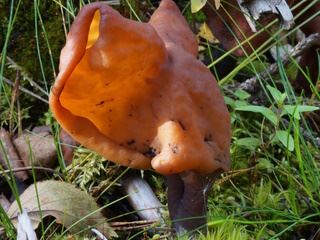
Stinkhorns
Stinkhorns are a distinctive group of fungi known for their unusual shapes and foul-smelling spore masses. Emerging from egg-like structures, they grow rapidly into often striking forms, sometimes resembling fingers or phallic shapes.
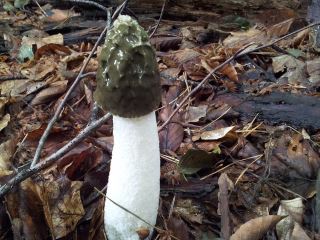
Lycoperdon, Calvatia, Bovista and other puffballs
Mushrooms in the Lycoperdon, Calvatia and Bovista genuses, also known as puffballs, are characterized by their round, ball-shaped fruiting bodies that release spores through an opening at the top. They are found in a variety of habitats, including grasslands, forests, and disturbed areas, and can range in size from just a few centimetres to over a meter in diameter.
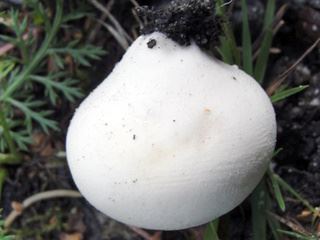

Polypores and similar fungi
Polypores are a group of fungi that have a distinct fruiting body with pores on their undersurface. They are also known as bracket fungi because their fruiting bodies often resemble shelves or brackets that grow on trees or logs.
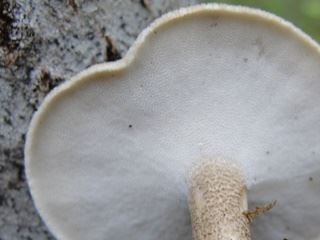
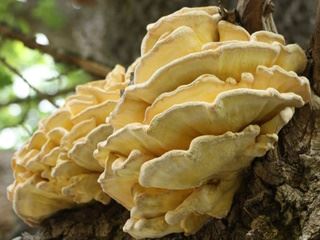
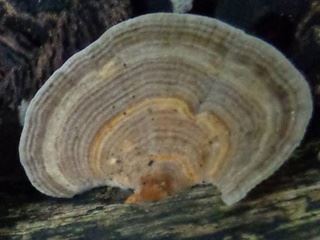
Tooth fungus
Tooth fungus are characterized by their tooth-like projections on the underside of their cap, instead of traditional gills. They often have a fleshy, funnel-shaped cap, and can range in color from brown to orange to yellow.
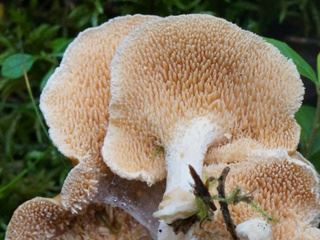
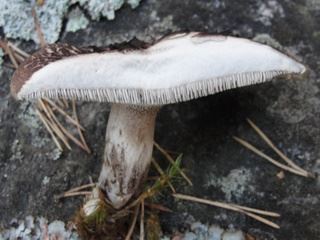
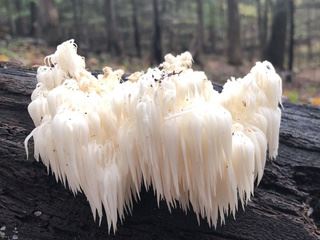
Cup fungi
Cup fungi are a group of fungi characterized by their cup-shaped fruiting bodies, which resemble small, often colourful bowls or cups. These fungi typically belong to the Ascomycota phylum and are known for their diverse colours and habitats. They are commonly found growing on decaying wood, leaf litter, or in soil.
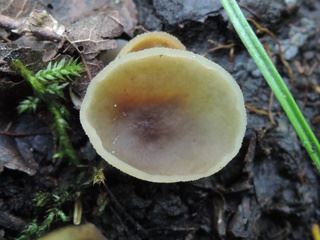
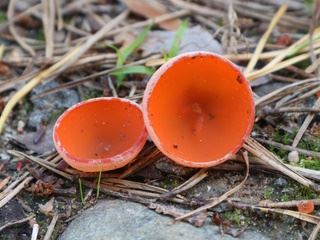
This section contains fungi that do not fit into any of the previous sections, like for example odd and rare species.
Agarics
Agarics (mushrooms with gills) that don't fit into the previous categories, mainly because there are too few to make a group.
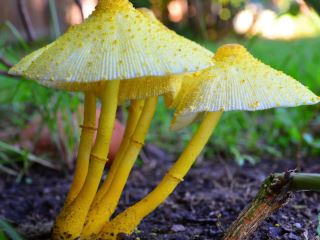
Other
Fungi without gills that don't fit into the previous categories, mainly rare and unusual species.
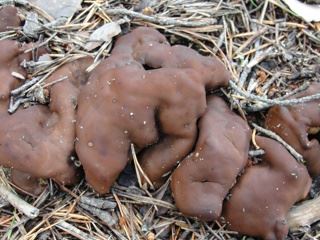
Many mushrooms are poisonous, and some can be lethally toxic. Distinguishing between edible and poisonous mushrooms can be very challenging. Therefore, we strongly advise against consuming wild mushrooms. This website does not contain any information about the edibility or toxicity of mushrooms.
Although efforts have been made to ensure accuracy on this website, the information may contain errors and omissions. Therefore, all content provided is for educational and informational purposes only and should not be relied upon or used as a basis for consuming any plants or mushrooms.
External links are provided for reference only. We do not endorse or take responsibility for the content, advice, or products found on these sites or in any advertisements shown on this website.